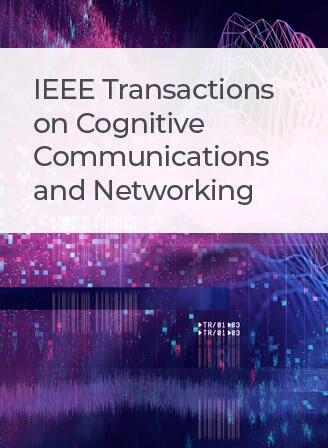基于学习和模型的雷达目标探测方法
IF 7.4
1区 计算机科学
Q1 TELECOMMUNICATIONS
IEEE Transactions on Cognitive Communications and Networking
Pub Date : 2024-04-19
DOI:10.1109/TCCN.2024.3391327
引用次数: 0
摘要
本文采用两种不同的方法来解决主动雷达目标探测问题:基于学习的方法和基于模型的方法。基于学习的方法使用卷积神经网络(CNN)来检测目标,而基于模型的方法则使用检测理论来设计检测器。检测理论框架用于考虑基于子空间的广义似然比检验(S-GLRT)和基于样本协方差矩阵的 GLRT(SCM-GLRT)检测器。为了解决 S-GLRT 探测器在杂波消除阶段可能出现的条件不佳问题,我们提出了一种新的 S-GLRT 递归实现方法,称为 RS-GLRT。此外,通过结合检测理论和核理论框架,提出了两种新的检测器,从而在检测中部署了更丰富的特征空间,提高了检测性能。此外,还提出了一种基于 CNN 的检测器,该检测器可在各种环境中提供针对不同噪声和杂波行为的鲁棒检测器。为实现这一目标,考虑了接收器噪声和杂波的通用模型,即所谓的 $\alpha $ 稳定干扰模型,该模型允许正确定义从脉冲分布到高斯分布范围内的噪声和杂波特性。文中给出了大量仿真结果,证明基于 CNN 的方法与基于检测理论的方法相比具有更优越的检测性能。本文章由计算机程序翻译,如有差异,请以英文原文为准。
Learning and Model-Based Approaches for Radar Target Detection
This paper addresses the active radar target detection problem using two different approaches: learning-based and model-based methods. The learning-based approach uses a convolutional neural network (CNN) to detect targets, while the model-based approach employs detection theory to design detectors. The detection theory framework is used to consider the subspace-based generalized likelihood ratio test (S-GLRT) and sample covariance matrix-based GLRT (SCM-GLRT) detectors. A new recursive implementation of the S-GLRT, called RS-GLRT, is proposed to address the possible ill-conditioning in the clutter cancelation stage of the S-GLRT detector. In addition, two new detectors are proposed by combining the detection theory and kernel theory frameworks, which enables the deployment of a richer feature space in the detection and improves the detection performance. A CNN-based detector is also presented, which provides a robust detector against diverse noise and clutter behaviors in various environments. To achieve this, a universal model is considered for receiver noise and clutter, known as the
$\alpha $
-stable interference model, which allows for the correct definition of noise and clutter properties in the range of impulsive to Gaussian distributions. Extensive simulation results are presented, demonstrating the superior detection performance of the CNN-based method compared to the detection theory-based methods.
求助全文
通过发布文献求助,成功后即可免费获取论文全文。
去求助
来源期刊

IEEE Transactions on Cognitive Communications and Networking
Computer Science-Artificial Intelligence
CiteScore
15.50
自引率
7.00%
发文量
108
期刊介绍:
The IEEE Transactions on Cognitive Communications and Networking (TCCN) aims to publish high-quality manuscripts that push the boundaries of cognitive communications and networking research. Cognitive, in this context, refers to the application of perception, learning, reasoning, memory, and adaptive approaches in communication system design. The transactions welcome submissions that explore various aspects of cognitive communications and networks, focusing on innovative and holistic approaches to complex system design. Key topics covered include architecture, protocols, cross-layer design, and cognition cycle design for cognitive networks. Additionally, research on machine learning, artificial intelligence, end-to-end and distributed intelligence, software-defined networking, cognitive radios, spectrum sharing, and security and privacy issues in cognitive networks are of interest. The publication also encourages papers addressing novel services and applications enabled by these cognitive concepts.
 求助内容:
求助内容: 应助结果提醒方式:
应助结果提醒方式:


